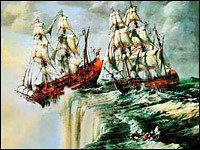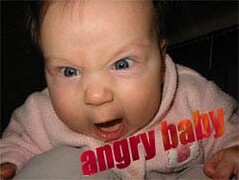togetherness
Are our lives just part of an impersonal social machine, or a variety of such machines, or are we hopeful individuals who can make a difference? Weinberger discusses this dialectic, the interpenetration between the importance of the individual and the importance of the group.
In the "real world" individuals often become insignificant as the size of a group grows and this creates all sorts of problems for both individuals and groups. For example, individuals begin to feel alienated and powerless, whilst groups feel they have to simplify what they stand for because complex messages can more easily be misunderstood. So, in the "real world" we often have a dumbing down all around in the transactions that occur between individuals and groups. Think of a political election, for instance.
The Web often caters for individuality better than the "real world" does, despite the huge size of the Web, its participants are working out ways of defying the apparent law that individuality is inversely proportional to group size.
Take celebrity for instance. Real world celebrity is phoney. Those who follow famous celebrities never develop anything approaching a real connection or relationship with them.
But there are famous people on the Web too and occasionally you do get the opportunity to interact with them in an authentic manner. Or alternatively, as I found out through participation in the logo list over a number of years that there are experts who are prepared to share as equals (Brian Harvey) and there are experts who have their name in lights but who stand aloof (Seymour Papert). Sure, Papert has some great ideas and is a great writer but Brian Harvey is just as knowledgable and is prepared to share his expertise day in day out for years on end. I know which sort of expert I prefer but wouldn't have even noticed the difference without the Web.
There are many such instances, for example in the past I've followed the current conversation, as a lurker, of Marvin Minsky ("Father of AI") at comp.ai.philosophy and more recently downloaded a draft copy of his next book, The Emotion Machine, from his site at MIT.
Moving on ... My preferred way of buying books is through amazon because they offer a better service than a "real world" bookstore. Before I buy a book I nearly always check out features of that book through amazon.
There are several features of the amazon service that I particularly like:
- readers reviews of a book I'm considering buying
- readers recommendations, listed with particular books, of other similar books that the reader thinks are either better or as good as the book under consideration
- listing and ranking of other books that were bought by customers who bought the book I'm considering
- the opportunity to view selected pages and the contents and index of their books
- lists of books created by enthusiasts of a particular topic (list-mania)
As part of his explanation of individual / group dynamics Weinberger pointed out something about amazon that I was vaguely aware of but hadn't fully comprehended.
In the first place amazon allowed readers to post reviews of books. But then some best selling books, such as Harry Potter, prompted over 3 thousand reviews and this defeated the initial purpose, because there were too many reviews for anyone to read. What happened next is that amazon presented the average rating of the book, from one to 5 stars. This gave a mass summary of readers' opinions but also had a downside. It didn't take advantage of the explicit and often helpful comments contained in the readers' reviews. So amazon added another level of review: readers of the reviews can rate the reviews indicating whether a particular review is helpful or not. This move pushed things back towards meeting individual needs but not far enough. Amazon also began flagging the reader reviewers whose reviews were highly rated by other readers so that their reviews stood out, eg. with a "Top 50" reviewer graphic.. This also made individual reader reviewers more recognisable on amazon.
Weinberger concludes his description quite consciously with reference to the Hegelian dialectic between the individual and the mass:
"This progression has an almost Hegelian logic to it, each step following from the others, each propelled by an internal contradiction: the web consists of hundreds of millions of individuals. They are a mass, but each member is unique. Individuals write reviews. The massness of the individuals makes the aggregate of reviews useless. So Amazon capture summary information, 1-5 stars, from the mass of individual reviews. But because those numeric rankings slight the individual side of the web, the site begins to star the individual reviewers - but by using the masses review of the reviewers as its criterion. And so on. One can almost feel the breeze of the pendulum as it swings this way and that: masses, individuality, masses, individuality. And most important, a new relationship between them: the Web consists of a mass that refuses to lose its individual face." (115)







